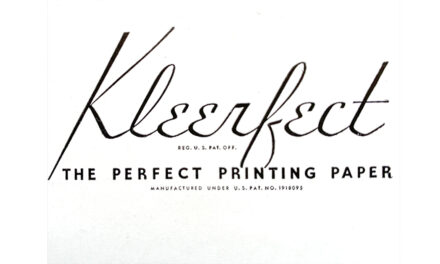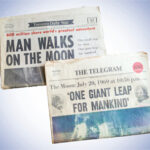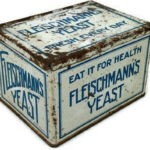The Linotype typesetter
changed the printing world

Photo Credit: Linotype-vorne-deutsches-museum.jpg, by Clemens PFEIFFER, Vienna.
Annotations by Paul Koning
It was the invention that absolutely powered the mass-printing industry. Thomas Edison, it is said, called it the “Eighth Wonder of the World.” Invented in Baltimore, Maryland in the 1880s—by a German immigrant named Ottmar Mergenthaler—every large newspaper owned one or more Linotype typesetting machines, each operated by a skilled journeyman. There were 25,000 of the machines in use in the United States by 1911, 33,000 by 1916, and more than 100,000 by 1954 .
The keyboard had a direct action opening a series of channels in the “Magazine” which contained brass matrices bearing impressed letters. The operator depressed the letter on the keyboard, releasing these matrices one letter at a time into an “Assembler”.
When the assembler was full the operator pressed a lever and the machine took the single line of assembled matrices and rotated them to the mold position. Molten lead, at 550 degrees Fahrenheit, filled the mold and took an impression from the matrices. The complete line of type was then ejected as a “slug” or strip of lead, into a receiving galley.
The “Elevator” then lifted the matrices to a “Distributor” bar at the top of the Linotype machine. The bar carried the matrices along the top of the machine until they were over the mouth of the channel to which they belonged, where they were released back into the machine by means of different combinations of teeth that operated like a key-and-lock arrangement.
Experienced typesetters were expected to produce about 30 words per minute.
The keyboard of the Linotype machine
Linotype’s power involved the composition of a line of text —hence the name “line o’ type”— using a special 90-key keyboard and nearby special trays for special characters not commonly used, such as math symbols.

The keyboard was arranged by the frequency of the letters’ use. Row 1, from the top, was e – t – a – o – i – n. Row 2 was s – h – r – d – l – u. The white keys were used to set capital letters, the black for lower case and the blue carried symbols and special characters.
Often, when Linotype operators made a mistake, they would run a finger down the first two rows to produce the words “etaoin shrdlu” in the line of type; a clear warning to printers that it should be discarded.

This photograph, taken probably between1940-1950 (of the New York Times composing room?) from “Linotype: The Film”, shows a battery of eight Linotype machines. Another battery is visible to the right. This film is about a machine from the past, but that does not mean this is a sentimental fact-film lamenting the loss of a technology.
The film was extensively researched. Discusssions with experts—from small town printers to typesetters for national publications—helped the producers present much about the history of the Linotype and how the machine works.
There were more than 100 Linotype machines at the New York Times and hundreds of skilled operators. Note the clothing of the journeymen. Three-piece suits and ties!
The Linotype machines have died, gone to the scrap yard. The former operators’ skills were not passed down to a new generation of operators.










